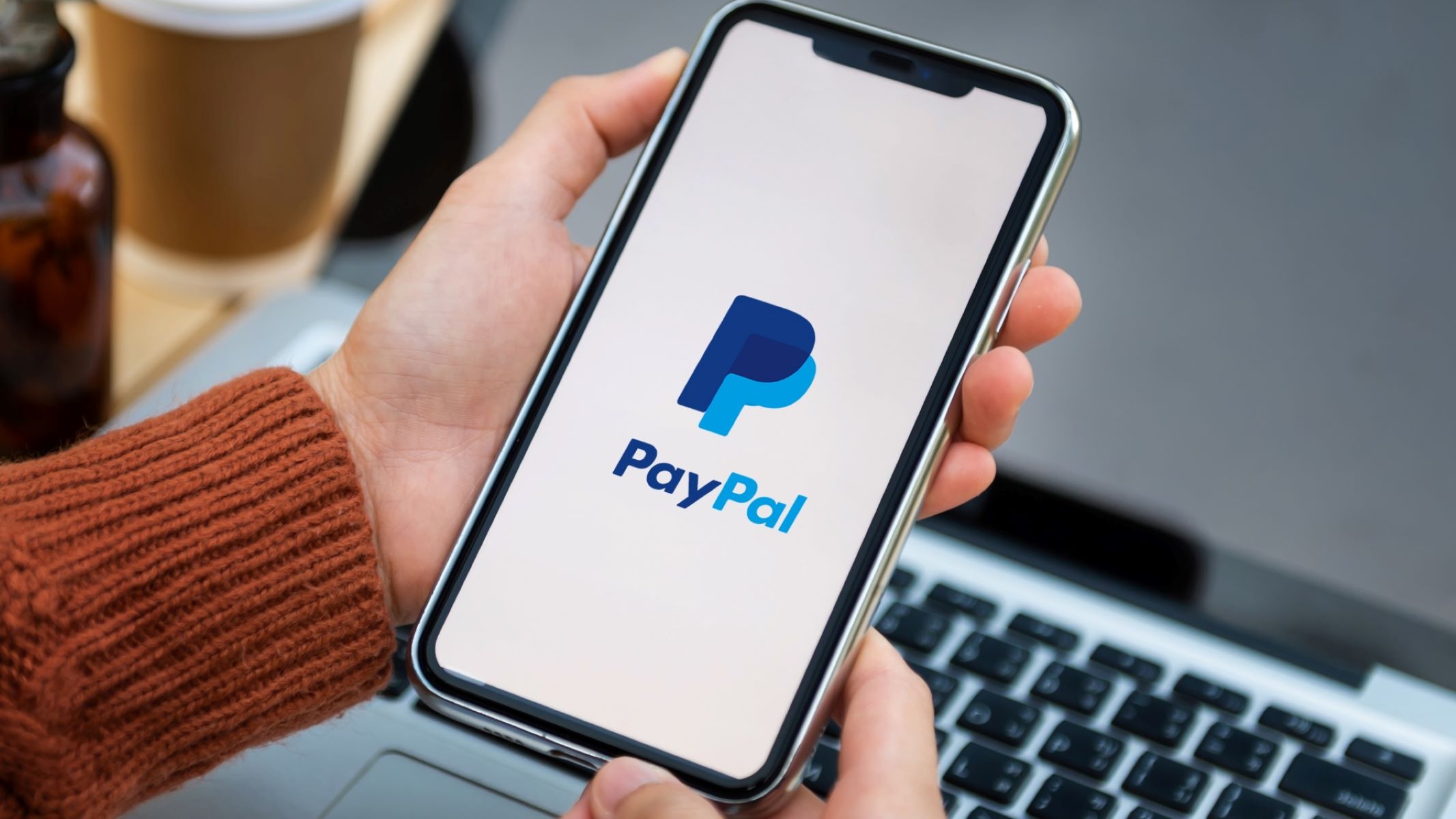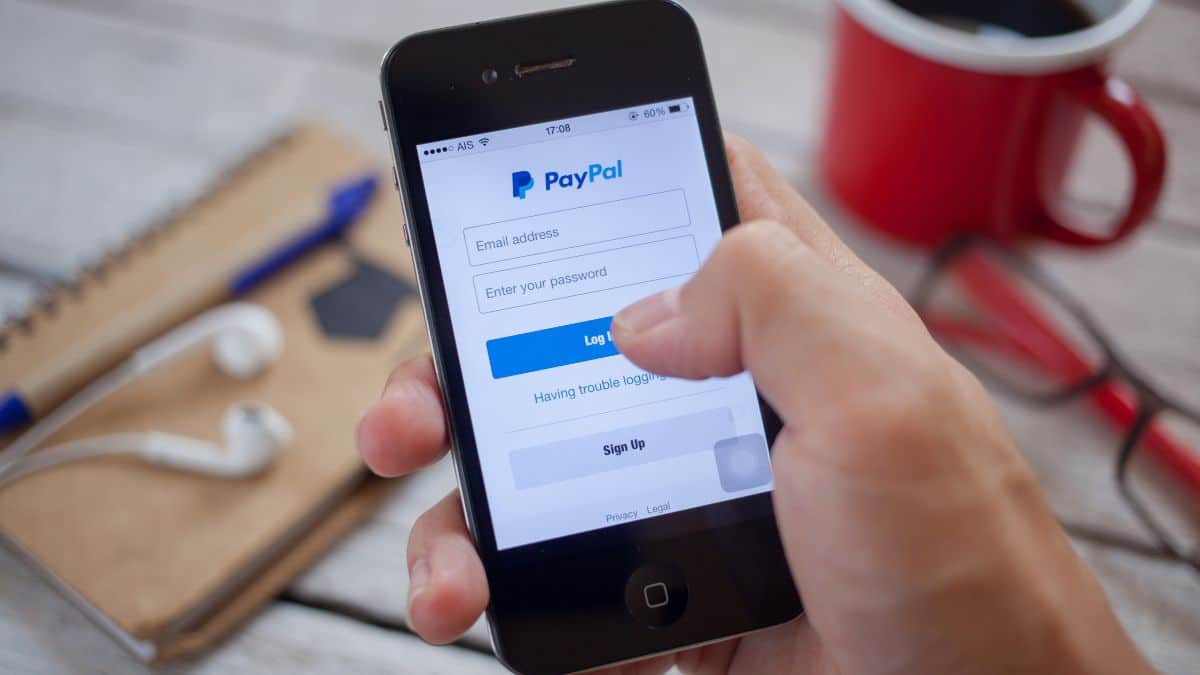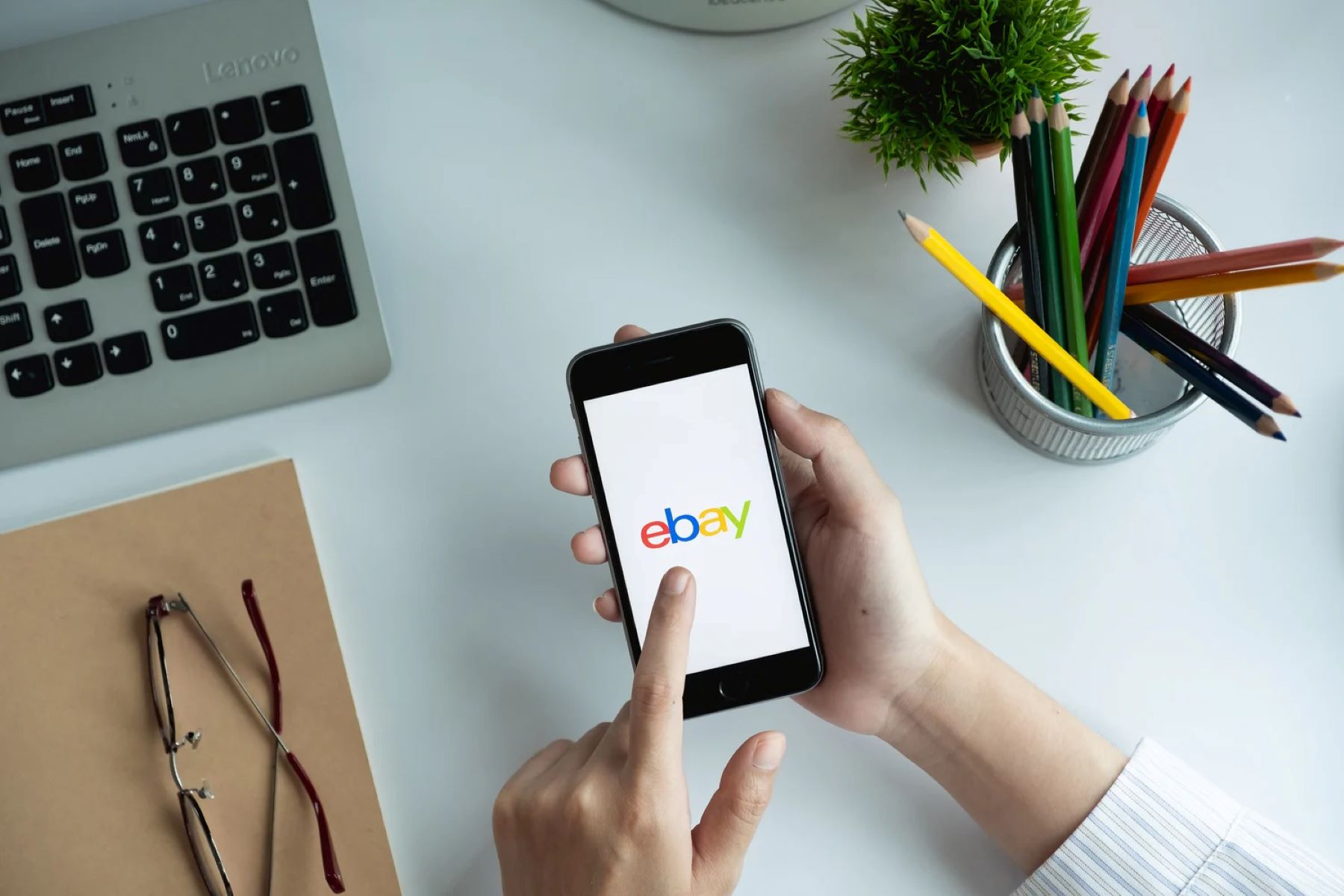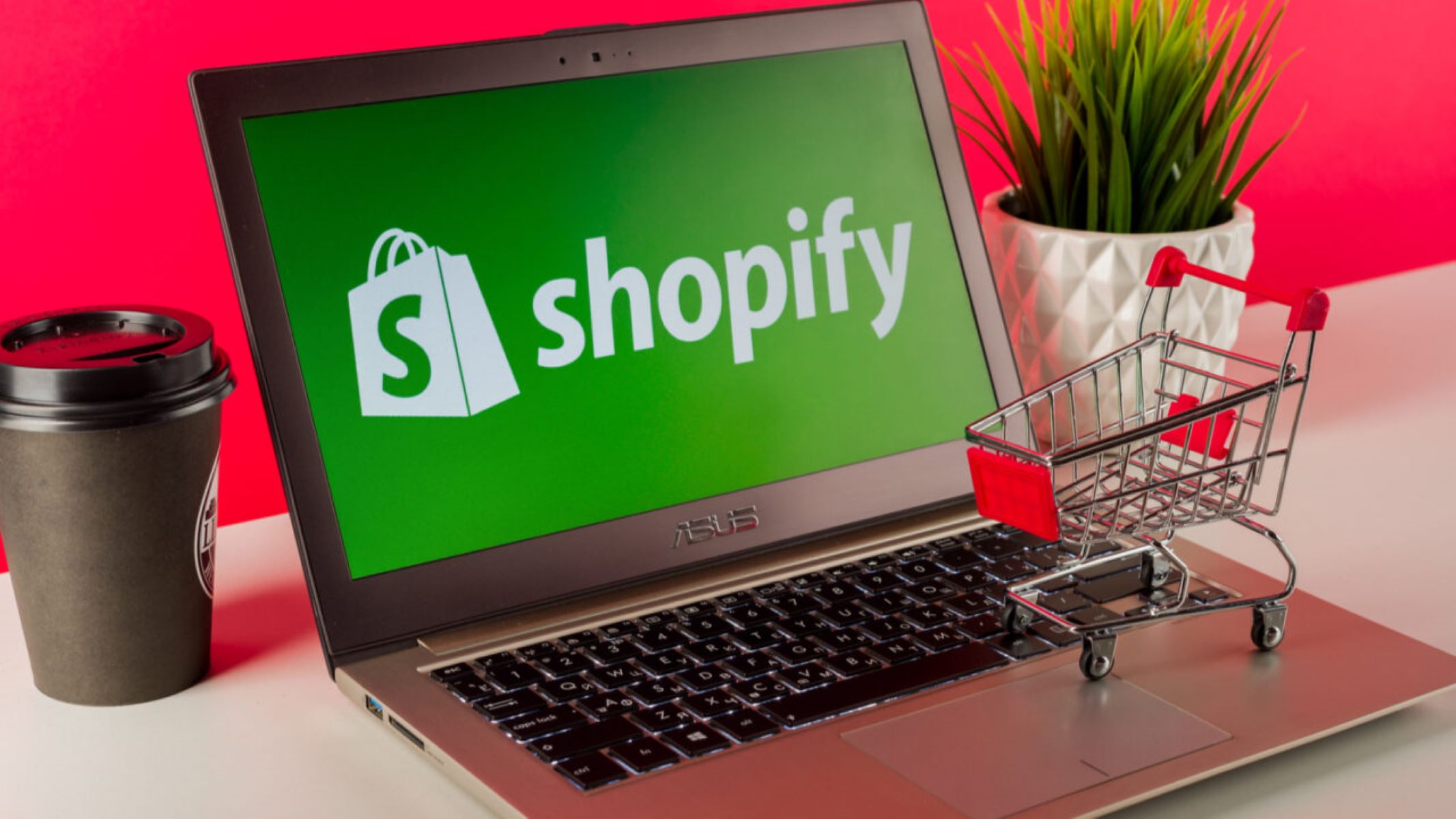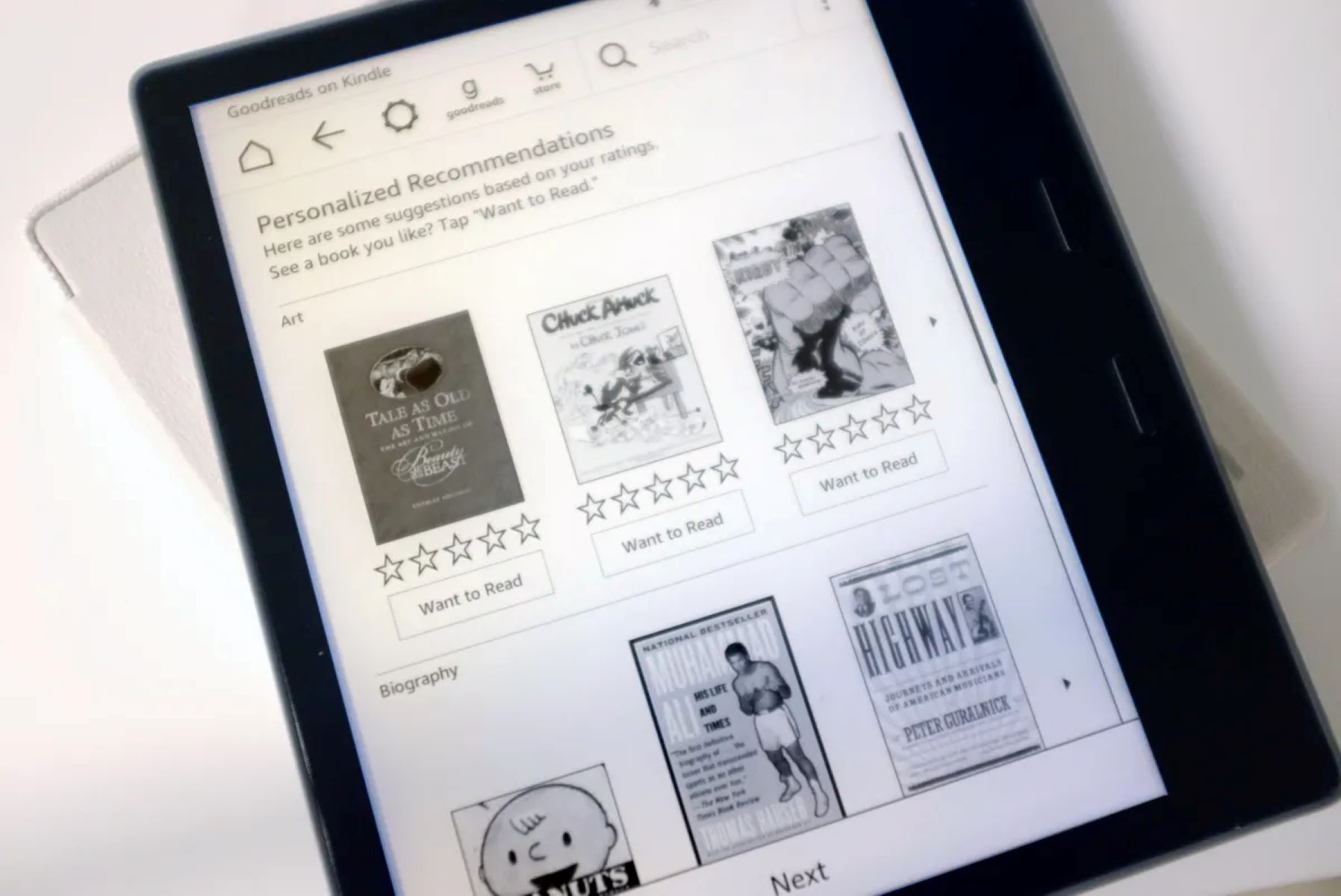Introduction
Welcome to the world of digital publishing! If you’ve written an eBook and are looking to sell it online, Paypal is an excellent payment platform that you can leverage. With its wide popularity and secure transactions, Paypal makes it easy for authors like you to sell your eBooks and earn revenue.
In this comprehensive guide, we will walk you through the step-by-step process of selling your eBook with Paypal. From setting up a Paypal account to promoting your eBook and monitoring sales, we’ve got you covered. So, let’s get started on this exciting journey of monetizing your literary work!
Selling eBooks has become increasingly popular in recent years, thanks to the digital revolution that has transformed the way we read and consume information. With the rise of e-readers, smartphones, and tablets, people are embracing eBooks for their convenience and portability.
By selling your eBook online, you have the opportunity to reach a global audience without the limitations of traditional publishing. With Paypal, you have a secure and reliable payment gateway that enables you to sell your eBook directly to customers, without the need for a middleman.
In the following steps, we will guide you through the process of setting up a Paypal account, creating an attractive eBook cover, writing a compelling sales page, converting your eBook into a suitable format, uploading it to a file hosting platform, generating a Paypal button, adding it to your sales page, testing the purchasing process, and promoting your eBook to drive traffic to your sales page.
Effective marketing and promotion are essential aspects of selling your eBook successfully. We will also explore how to monitor your sales and make necessary adjustments to optimize your revenue. By following these steps, you will be well-equipped to sell your eBook with Paypal and maximize your earning potential.
So, grab your pen and paper, or fire up your laptop, and let’s dive into the exciting process of selling your eBook with Paypal!
Step 1: Set up a Paypal account
The first step in selling your eBook with Paypal is to set up a Paypal account. If you already have an existing Paypal account, you can skip this step and proceed to the next one.
To set up a Paypal account, visit the Paypal website and click on the “Sign Up” button. You will be prompted to choose between a “Personal” or “Business” account. For selling your eBook, it is recommended to create a Business account, as it offers additional features and flexibility for online transactions.
Provide your personal and business information, including your name, email address, and physical address. You will also need to link a bank account or credit card to your Paypal account for receiving payments.
Once you have completed the registration process, Paypal will send a verification email to the address you provided. Click on the link in the email to verify your account and gain full access to all the features offered by Paypal.
It’s important to note that Paypal may have certain restrictions depending on your country of residence. Make sure to review Paypal’s policies and guidelines to ensure compliance with any specific requirements.
Additionally, Paypal offers various payment options for your customers, including credit cards and bank transfers. Familiarize yourself with the different payment methods and fees associated with each to make an informed decision that aligns with your business goals.
Setting up a Paypal account is a simple and straightforward process. Once you have completed this step, you are ready to move on to the next step – creating an attractive eBook cover that will capture the attention of potential buyers.
Step 2: Create an attractive eBook cover
A visually appealing eBook cover plays a crucial role in capturing the attention of potential buyers. It serves as the first impression of your eBook and can significantly impact whether someone decides to purchase it or not. In this step, we will guide you on how to create an attractive eBook cover that will entice readers to click and learn more about your work.
There are several options available for creating an eBook cover. If you possess design skills, you can use graphic design software such as Adobe Photoshop or Illustrator to create a custom cover. Alternatively, you can hire a professional graphic designer to bring your vision to life.
If you’re on a budget or prefer a more hands-on approach, there are online platforms like Canva that offer pre-designed templates specifically for eBook covers. Canva allows you to customize the template with your own images, colors, and fonts, giving you creative control without the need for advanced design skills.
Before diving into design, it’s important to understand the key elements of a compelling eBook cover:
- Title: Choose a catchy title that clearly reflects the subject or theme of your eBook. Consider using bold and easy-to-read fonts that stand out.
- Subtitle: If your eBook has a subtitle, include it beneath the title to provide additional context and entice readers.
- Author’s name: Include your name as the author of the eBook. This adds credibility and establishes your brand.
- Eye-catching imagery: Select a visually appealing image that represents the content of your eBook. It should be relevant, high-quality, and attention-grabbing.
- Color scheme: Choose colors that evoke the desired emotions and attract your target audience. Consider using contrasting colors to make the cover more visually striking.
When designing your eBook cover, keep in mind the genre and target audience of your eBook. Different genres have different design expectations. For example, a romance eBook may require a more romantic and dreamy cover, while a thriller eBook may require a darker and more intense design.
Once you have created your eBook cover, save it as a high-resolution image in a suitable file format, such as JPEG or PNG. This will ensure that the cover looks crisp and professional across different devices and platforms.
Remember, a well-designed eBook cover can make a significant difference in attracting potential buyers. So, invest time and effort in creating an appealing cover that conveys the essence of your eBook and entices readers to click and explore further.
Step 3: Write a compelling sales page for your eBook
Now that you have an eye-catching eBook cover, it’s time to create a compelling sales page that will persuade potential buyers to make a purchase. Your sales page is where you showcase the value of your eBook, highlight its unique selling points, and convince readers why they should invest in your work. In this step, we will guide you on how to write a sales page that captures attention and drives conversions.
When crafting your sales page, keep the following tips in mind:
- Start with a captivating headline: Your headline should grab the reader’s attention and make them curious about your eBook. Use bold and compelling language to hook the reader and make them want to learn more.
- Outline the benefits: Clearly communicate the benefits that readers can expect to gain from your eBook. Whether it’s learning a new skill, solving a problem, or finding inspiration, highlight the specific ways your eBook will add value to the reader’s life.
- Provide a brief overview: Give a concise yet engaging overview of what your eBook offers. Highlight the key topics or chapters and how they relate to the reader’s needs or interests.
- Include testimonials or reviews: If you have received positive feedback or reviews from readers or industry experts, showcase them on your sales page. Social proof adds credibility and encourages potential buyers to trust in the quality of your eBook.
- Create a sense of urgency: Incorporate limited-time offers, bonuses, or discounts to create a sense of urgency and motivate readers to take immediate action. Let them know that your eBook is a valuable resource that should not be missed.
- Include a call-to-action: Clearly state the next steps for potential buyers, such as clicking a “Buy Now” button or signing up to receive a sample chapter. Make it easy for them to take action and complete the purchase process.
In addition to the textual content, make use of visually appealing elements such as images, graphics, and infographics to break up the text and make the sales page more engaging. Use bullet points or numbered lists to highlight key features or benefits of your eBook.
Remember to write in a conversational tone and connect with your audience on a personal level. Empathize with their needs, frustrations, or desires and position your eBook as the solution they have been looking for.
Proofread your sales page thoroughly to eliminate any grammatical or spelling errors. Presenting a polished and professional sales page will instill confidence in potential buyers and increase the chances of conversion.
Once you have completed writing your sales page, integrate it with your eBook cover and other relevant elements to create a visually cohesive and persuasive landing page that will entice readers to make a purchase.
Step 4: Convert your eBook into a suitable format
After creating an attractive eBook cover and a compelling sales page, it’s essential to convert your eBook into a suitable format that can be easily consumed by your readers. In this step, we will guide you on how to convert your eBook into a format that is compatible with various devices and platforms.
The most common and widely accepted eBook format is ePub. ePub is a free and open standard that is supported by most e-readers, including Amazon Kindle devices, Apple iBooks, and Adobe Digital Editions. To convert your eBook to ePub format, you can make use of various online conversion tools or eBook creation software.
If you wrote your eBook using a word processing software like Microsoft Word or Google Docs, you can export your document as an ePub file directly from the software. Most word processing software offer an “Export” or “Save As” option that allows you to select the ePub format and save your document accordingly.
When converting your eBook to ePub format, ensure that you preserve the formatting, images, and other visual elements of your eBook. Double-check the final ePub file to make sure that it displays correctly and is readable on different devices and e-reader applications.
In addition to ePub, you may also consider converting your eBook to other formats such as PDF or MOBI (for Amazon Kindle devices). This allows you to cater to readers who prefer different reading platforms or devices.
Converting your eBook to PDF format is relatively easy and can be done using various online tools or software. PDF files are widely compatible and retain the original formatting, making them suitable for readers who prefer a fixed layout reading experience.
To convert your eBook to MOBI format for Kindle devices, you can make use of Amazon’s Kindle Direct Publishing (KDP) platform. KDP provides a step-by-step guide on how to properly format and upload your eBook to their platform in MOBI format.
Before finalizing the conversion process, remember to proofread your eBook in its new format to ensure there are no formatting errors or missing elements. This step is crucial to maintain the overall quality and readability of your eBook.
By converting your eBook into a suitable format, you make it accessible to a wider audience and increase the chances of reaching more potential buyers. So, invest time and effort in the conversion process to deliver a seamless reading experience to your readers.
Step 5: Upload your eBook to a file hosting platform
Now that you have successfully converted your eBook into a suitable format, it’s time to upload your eBook to a file hosting platform. A file hosting platform allows you to store and distribute your eBook securely, ensuring that it can be easily accessed and downloaded by your readers. In this step, we will guide you on how to upload your eBook to a file hosting platform.
There are several file hosting platforms available, each with its own features and pricing plans. Some popular options include Dropbox, Google Drive, Amazon S3, and self-hosted platforms like WordPress with the help of plugins such as Easy Digital Downloads.
When choosing a file hosting platform, consider factors such as storage capacity, download speed, security features, and ease of use. Look for platforms that offer reliable and secure hosting services to ensure the safety and accessibility of your eBook.
To upload your eBook, create an account or sign in to your chosen file hosting platform. Locate the option to upload files, which is typically found in the main dashboard or menu. Click on the upload button and select the eBook file from your computer.
While uploading your eBook, pay attention to any additional settings or options provided by the file hosting platform. You may have the ability to set permissions for downloading, add descriptions or tags to your eBook, or customize the appearance of the download page.
Once the upload is complete, you will typically receive a unique URL or link for your eBook. This link will serve as the direct download link for your customers to access your eBook. Test the link to ensure that it is working correctly and that your eBook can be successfully downloaded.
Keep in mind that some file hosting platforms have limitations on the file size or bandwidth usage. If your eBook is large or you expect high traffic and downloads, you may need to upgrade to a premium plan or explore other file hosting options that can accommodate your needs.
After uploading your eBook to the file hosting platform, make a note of the direct download link. This link will be used later when setting up the payment process and integrating it with your sales page.
Congratulations! You have successfully uploaded your eBook to a file hosting platform. In the next step, we will guide you on how to generate a Paypal button for your eBook and seamlessly integrate it into your sales page.
Step 6: Generate a Paypal button for your eBook
Now that your eBook is uploaded to a file hosting platform, it’s time to generate a Paypal button that will facilitate the purchase process for your customers. The Paypal button allows them to make a payment directly to you and gain access to your eBook. In this step, we will guide you on how to generate a Paypal button for your eBook.
To generate a Paypal button, log in to your Paypal account and navigate to the Paypal Buttons section. Here, you will find options to create different types of buttons, such as “Buy Now,” “Add to Cart,” or “Subscribe.” For selling your eBook, the “Buy Now” button is most suitable.
Click on the button type you want to create and follow the step-by-step instructions provided by Paypal. You will be prompted to enter details such as the item name, price, and currency. Make sure to specify the correct price for your eBook and select the appropriate currency for your target audience.
In addition to the basic information, you can customize the appearance of the Paypal button to match the design of your sales page. Paypal offers options to select button size, color, and text. Choose a button style that complements your sales page and makes it visually appealing.
Once you have filled in all the necessary information and customized the button to your preference, Paypal will generate the HTML code for the button. Copy the provided code and paste it into the HTML of your sales page where you want the button to be displayed.
Remember to place the Paypal button in a prominent and easily accessible location on your sales page, such as near the call-to-action or at the end of your eBook description. This will ensure that potential buyers can easily find and click the button to initiate the purchasing process.
Before publishing your sales page, it’s crucial to test the Paypal button to verify that it is working correctly. Click on the button and follow the process as if you were a customer making a purchase. Ensure that the transaction is processed smoothly and that the buyer receives access to the eBook after completing the payment.
By generating a Paypal button for your eBook, you provide a seamless and secure payment option for your customers. The button streamlines the purchasing process and allows you to monitor payments and sales directly through your Paypal account.
With the Paypal button in place, you’re now ready to integrate it into your sales page and start promoting your eBook to potential buyers. In the next step, we will guide you on how to add the Paypal button to your sales page for a seamless purchasing experience.
Step 7: Add the Paypal button to your sales page
Now that you have generated a Paypal button for your eBook, it’s time to add it to your sales page. Integrating the Paypal button seamlessly into your sales page will ensure a smooth and convenient purchasing experience for your customers. In this step, we will guide you on how to add the Paypal button to your sales page.
To add the Paypal button, open your sales page in an HTML editor or content management system (CMS) that supports HTML coding. Locate the section of your sales page where you want to place the button, such as near the call-to-action or at the end of your eBook description.
Within the HTML editor, paste the HTML code that you generated for the Paypal button. The code will consist of the necessary HTML and Javascript elements that create the button functionality.
After pasting the code, preview your sales page to ensure that the button is displaying correctly and is properly aligned with the surrounding content. You can make further adjustments to the button’s position, size, or appearance by modifying the CSS properties in the HTML code or through the design settings of your CMS.
Remember to test the functionality of the Paypal button on your sales page. Click on the button and go through the purchasing process as if you were a customer. Confirm that the button redirects to the Paypal payment gateway and allows for a smooth transaction completion.
When a customer clicks on the Paypal button, they will be directed to the Paypal website, where they can log in to their own Paypal account or complete the payment using a credit card. After the payment is successfully processed, Paypal will redirect the customer back to a designated page, usually a thank you or download page where they can access their purchased eBook.
Ensure that the thank you or download page provides clear instructions on how to access the eBook and includes any additional details or bonuses that may be included with the purchase. This page serves as a confirmation for the customer and further enhances their overall buying experience.
By adding the Paypal button to your sales page, you provide potential buyers with a convenient and secure way to purchase your eBook. The integration of the Paypal button streamlines the payment process and helps increase conversions and sales for your eBook.
Congratulations! You have successfully added the Paypal button to your sales page. In the next step, we will guide you on how to test the purchasing process to ensure that everything is functioning smoothly before promoting your eBook to potential buyers.
Step 8: Test the purchasing process
After integrating the Paypal button into your sales page, it’s crucial to thoroughly test the purchasing process to ensure that everything is functioning smoothly. Testing allows you to identify any potential issues or errors that may arise during the actual purchase of your eBook. In this step, we will guide you on how to test the purchasing process.
Start by visiting your sales page and going through the process as if you were a potential buyer. Click on the Paypal button and proceed to the Paypal payment gateway. If you already have a Paypal account, log in with your account details. If not, proceed with the option to pay using a credit or debit card.
Enter the necessary payment details and complete the checkout process, ensuring that all the required fields are filled correctly. Once the payment is processed, verify that you are redirected to the designated thank you or download page where you can access your purchased eBook.
On the thank you or download page, carefully check that all the details are accurate and that the instructions on how to access the eBook are clear and easy to follow. If you have any additional bonuses or resources accompanying the eBook, make sure they are easily accessible as well.
Download the eBook and open it on various devices and e-reader applications to ensure that it displays correctly and is readable. Pay attention to formatting issues, missing content, or any other errors that may disrupt the reading experience.
In addition to testing the purchasing process yourself, consider asking a trusted friend or family member to go through the process as well. Their fresh perspective may help identify any usability or functionality issues that you may have overlooked.
While testing, note down any issues or glitches that you encounter. After completing the testing phase, review your notes and address each problem systematically. This may involve adjusting the sales page layout, modifying the Paypal button settings, or troubleshooting any technical issues that may have arisen.
By thoroughly testing the purchasing process, you ensure that your customers will have a seamless and hassle-free experience when buying your eBook. A smooth purchasing experience increases customer satisfaction and helps build trust and credibility in your brand as an author.
Once you are confident that the purchasing process is error-free and functioning correctly, you can move on to the next step – promoting your eBook and driving traffic to your sales page.
Step 9: Promote your eBook and drive traffic to your sales page
Now that your eBook is ready for sale, it’s time to spread the word and drive traffic to your sales page. Effective promotion is essential to attract potential buyers and increase the visibility of your eBook. In this step, we will guide you on how to effectively promote your eBook and drive traffic to your sales page.
Start by creating a comprehensive marketing plan that outlines your promotional strategies. Consider utilizing various online channels such as social media platforms, email marketing, content marketing, and collaborations with influencers or bloggers in your niche.
Utilize social media platforms like Facebook, Twitter, Instagram, and LinkedIn to build an online presence for your eBook. Create engaging posts, share excerpts or quotes from your eBook, and interact with your target audience. Engage in relevant communities and groups to establish yourself as an authoritative figure in your niche.
Email marketing is another effective strategy for reaching potential buyers. Build an email list by offering a free sample chapter or a valuable resource related to your eBook. Regularly send out newsletters or updates to your subscribers, highlighting the benefits of your eBook and offering exclusive discounts or offers.
Content marketing is crucial for establishing your credibility and attracting organic traffic. Create informative blog posts, videos, or podcasts that resonate with your target audience. Incorporate relevant keywords and optimize your content for search engines to improve the visibility of your sales page.
Consider collaborating with influencers or bloggers who have a strong following in your niche. Reach out to them and offer a free copy of your eBook in exchange for an honest review or a mention on their platform. This can help expand your reach and tap into their audience base.
Guest posting on popular blogs or websites related to your eBook’s topic is another effective way to drive traffic to your sales page. Write high-quality articles or guest posts that provide value to the readers and include a link to your sales page in the author bio or within the content if allowed.
Word-of-mouth promotion is powerful. Encourage satisfied readers to leave reviews on your sales page or on platforms like Amazon or Goodreads. Positive reviews will increase the credibility of your eBook and attract more potential buyers.
Additionally, consider leveraging paid advertising platforms like Google Ads, Facebook Ads, or Amazon Ads to reach a broader audience. Set a budget and target specific keywords or demographics to optimize your ad campaigns.
Monitor your promotional efforts and analyze the results to identify what strategies are working best for you. Use tools like Google Analytics to track website traffic, conversion rates, and the sources of your traffic. Adjust your promotional tactics based on the data and feedback you receive.
Remember, consistent and targeted promotion is key to driving traffic to your sales page and increasing eBook sales. Experiment with different strategies, stay engaged with your audience, and adapt your approach to ensure continued success.
With your marketing efforts underway, it’s important to monitor and track your eBook sales to make informed decisions and adjustments. In the next step, we will guide you on how to monitor sales and make necessary adjustments to optimize your revenue.
Step 10: Monitor sales and make necessary adjustments
Once your eBook is available for sale and your promotional efforts are in full swing, it’s crucial to continuously monitor your sales and make necessary adjustments to optimize your revenue. Tracking your sales performance allows you to identify trends, understand customer behavior, and refine your marketing strategies. In this final step, we will guide you on how to monitor sales and make necessary adjustments for optimal results.
Start by regularly reviewing your sales data. Keep a record of the number of eBooks sold, revenue generated, and conversion rates. This information will help you understand the effectiveness of your promotional efforts and identify areas that may require improvement.
Use analytics tools, such as Google Analytics or the tracking features provided by your file hosting platform, to track the source of your sales. Identify which marketing channels are driving the most traffic and generating the most sales. This knowledge will help you allocate your marketing resources effectively.
Pay attention to customer feedback. Engage with your readers through social media, email, or surveys to gather their thoughts and opinions on your eBook. Based on their feedback, make adjustments to address any concerns or enhance areas that can further enhance the value of your eBook.
Consider conducting A/B tests to experiment with different promotional strategies. Test variations in your sales page, pricing, or marketing messages to see which approaches yield better results. This iterative approach will help you optimize your promotional efforts and maximize your conversion rates.
Regularly update your promotional content to keep it fresh and engaging. Create new blog posts, videos, or social media content related to your eBook to maintain the interest of your audience. Adapting your marketing materials based on current industry trends or reader preferences will help you stay relevant and attract new buyers.
Monitor your competitors and stay updated on industry trends. Analyze their marketing strategies, pricing models, and positioning in the market. This knowledge will allow you to stay competitive and make informed decisions on how to differentiate and promote your eBook effectively.
Consider offering promotions or discounts periodically to incentivize potential customers to make a purchase. Limited-time offers, bundle deals, or exclusive bonuses can create a sense of urgency and drive sales. Monitor the results of these promotional offers to determine if they are effective in boosting your revenue.
Finally, be patient and persistent. Selling eBooks takes time and effort. Continuously monitor your sales data, make data-driven decisions, and adapt your strategies accordingly. Success may not come overnight, but with dedication and a willingness to adjust, you can optimize your sales and generate a steady stream of revenue from your eBook.
By regularly monitoring your sales and making necessary adjustments, you can ensure that your eBook maintains its momentum in the market. Stay proactive, embrace feedback, and continuously refine your marketing approach to maximize the success of your eBook.
Conclusion
Congratulations on successfully navigating the process of selling your eBook with Paypal! Throughout this guide, we have covered the essential steps to help you set up a Paypal account, create an attractive eBook cover, write a compelling sales page, convert your eBook into a suitable format, upload it to a file hosting platform, generate a Paypal button, add it to your sales page, test the purchasing process, promote your eBook, monitor sales, and make necessary adjustments.
By following these steps, you have positioned yourself for success in the digital publishing world. Selling eBooks with Paypal provides a seamless and secure payment solution, allowing you to reach a global audience and monetize your literary creations. Remember to always provide value to your readers, continuously promote your eBook, and adapt your strategies based on customer feedback and market trends.
As you embark on your journey as an eBook author, don’t underestimate the power of marketing and promotion. Invest time and effort into creating a compelling sales page, leveraging social media platforms, utilizing email marketing, collaborating with influencers, and exploring various promotional channels to drive traffic to your sales page. Monitor your sales data, analyze the results, and make necessary adjustments to optimize your revenue.
Remember, success in selling your eBook requires patience, persistence, and a willingness to adapt. Stay focused on delivering high-quality content, engaging with your audience, and staying up-to-date with the latest trends in your niche. Iterate on your marketing strategies, experiment with different promotional tactics, and continually refine your approach.
Lastly, never stop learning and improving. Keep exploring new ways to reach your target audience, stay informed about industry developments, and stay open to feedback from your readers. The more you engage with your audience and provide value, the greater the chances of achieving long-term success as an eBook author.
Now, armed with the knowledge and steps outlined in this guide, it’s time to put your plan into action. Embrace the opportunities that selling your eBook with Paypal offers, and may your literary journey be filled with success, creativity, and fulfillment!







